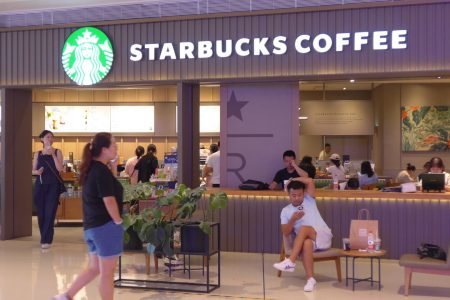People seen around the Starbucks coffee store in Shenzhen, China.
Jakub Porzycki | Nurphoto | Getty Images
On Starbucks’ fourth-quarter earnings call, newly installed CEO Brian Niccol told investors he needed to spend more time in China to understand the challenges.
The company’s same-store sales in the country plummeted 14% as foot traffic and the average spend per customer fell. Niccol told CNBC’s Andrew Ross Sorkin that he plans to visit the country the first or second week of December to better understand the business.
Here’s what he might see when he visits.
A low-cost model led by Chinese upstarts
Chinese upstarts have been growing in popularity in the coffee space, competing with more than 7,300 Starbucks stores in the country.
A Starbucks store is being seen in Shanghai, China, on June 18, 2024.
Costfoto | Nurphoto | Getty Images
The formerly Nasdaq-listed Luckin Coffee ran into accounting issues and went through a de-listing. But despite that, the Chinese coffee chain has been growing fast in China, with more than 20,000 stores by the end of third quarter.
And it is far from the only one. Other local rivals include Cotti Coffee, Manner, M Stand, Seesaw and Nowwa.
Luckin, Cotti, and Manner are the most aggressive on pricing.
For example, in Beijing, a small latte that costs $4.22 at Starbucks goes for $2.25 at Luckin, $1.75 at Cotti, and $2.11 at Manner. And that’s without the regular steep discounts. One recent day, for example, saw Luckin offering a promotion selling most drinks at 90 cents.
Many of these Chinese chains have stores that can be cramped and run with maybe two — or in Manner’s case oftentimes only one — barista. Food menus are limited, and seating is little more than a couple of folding chairs. However, the drinks generally consistently undercut Starbucks by half.
Starbucks has an express version of its coffee stores in China called Starbucks Now, where most patrons order drinks on the app for pick up. The interiors are more basic. Even so, there are no special discounts compared to traditional Starbucks.
Money-conscious consumers holding onto aspirations
Price is an important consideration for Chinese consumers because of the slowing economy. At the same time, many want to maintain similar lifestyles, which means consumers are looking to save wherever they can without compromising too much on quality.
For the coffee competition, the Chinese chains keep their brews interesting by switching up the menu often and experimenting with combos that go well beyond the traditional cappuccino.
Coffees are mixed with fruit juice, scented with flowers, and thickened with rice and even cheese. Chinese-brand Manner boasts that it only uses locally sourced beans and trains its baristas to work semi-automatic coffee machines.
A young barista works on the cold brew bar in Shanghai Starbucks Reserve Roastery.
Zhang Peng | Lightrocket | Getty Images
M Stand and Seesaw compete on the higher-end of the market with more…
Read More: A fast-changing Chinese coffee market awaits Starbucks CEO Niccol

